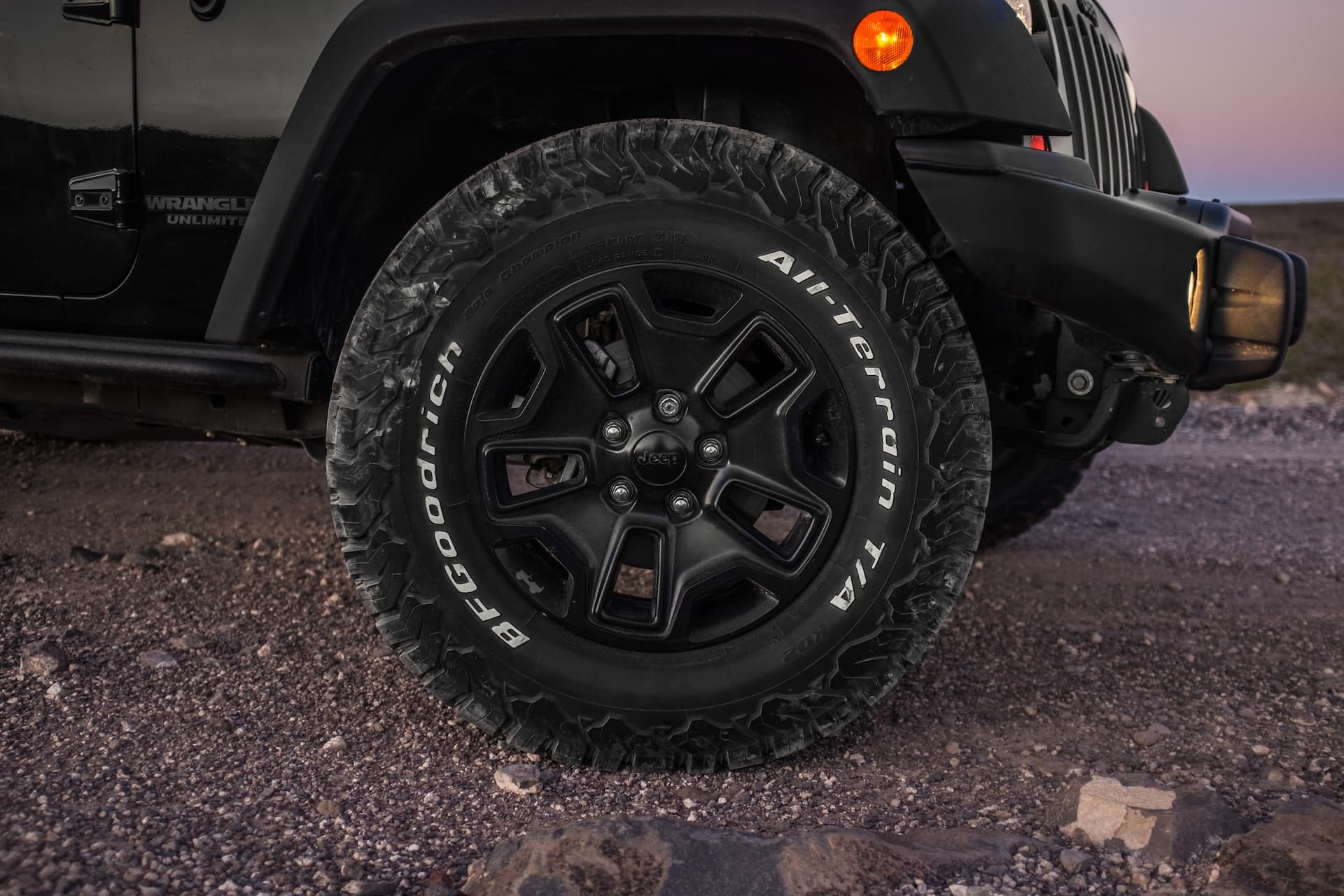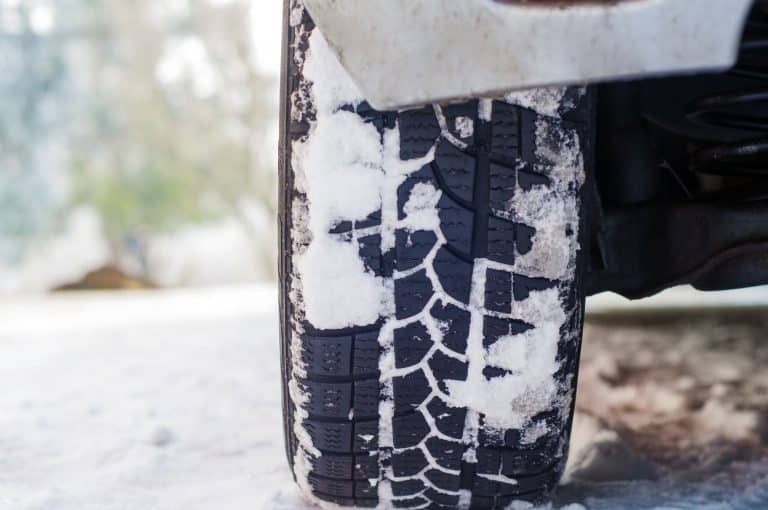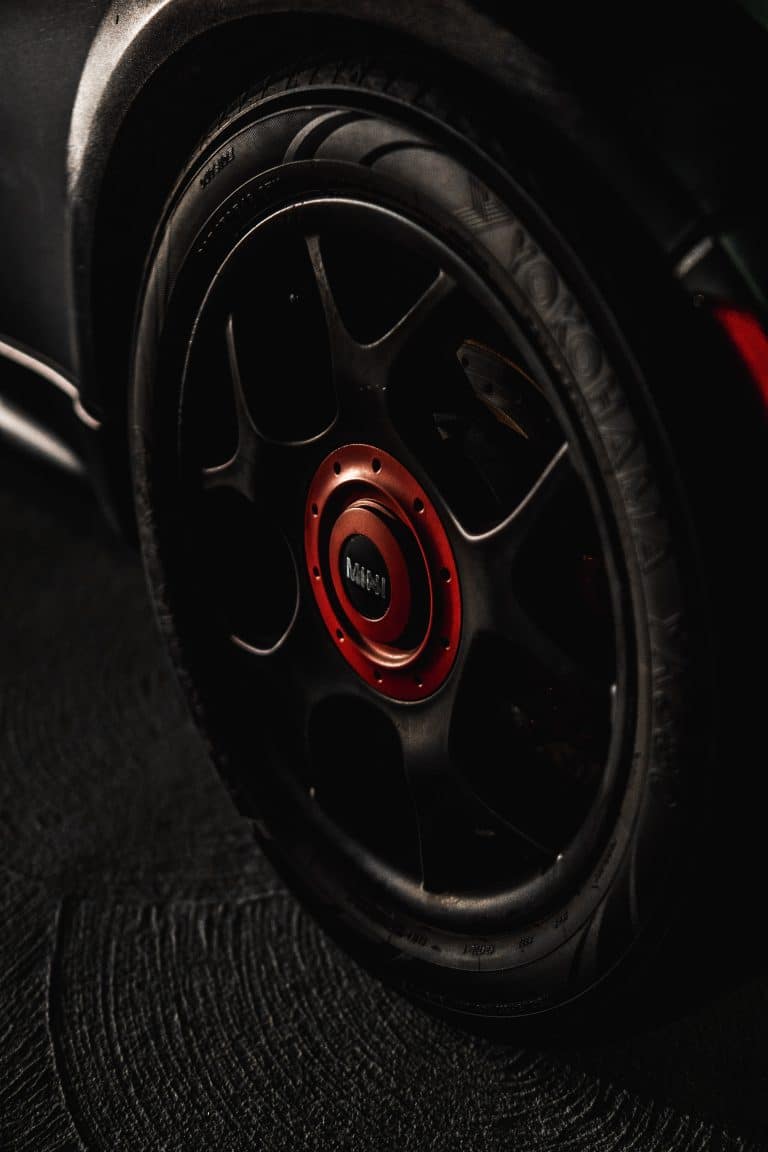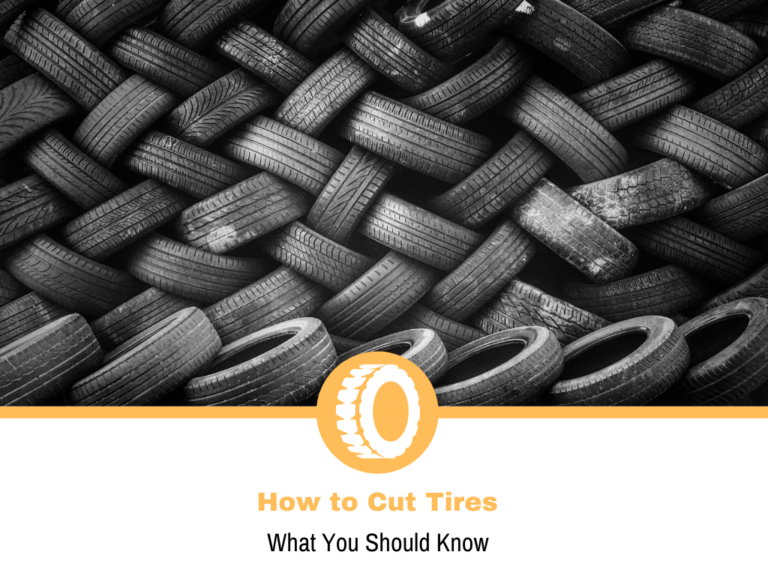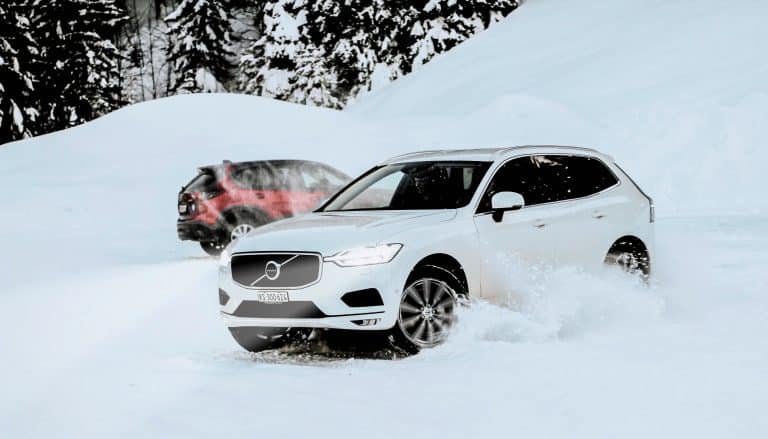The Different Types of Off-Road Tires: HT vs. AT vs. MT
As much as I’m not a fan of large vehicles like SUVs or trucks, the industry provides them, and people buy them. Despite my lack of love for these kinds of vehicles, there are plenty of advantages that some owners find useful.
Regardless if you’re after a more roomy vehicle, one that can haul bigger loads, or its off-road ability, SUVs or trucks are the best option. There are some variations in the capabilities of a specific model, which is why you’d get the one that suits you the best.
The car is one thing, but the tires are very important. Thanks to the advancement in the tire industry, there are multiple types of tires capable of delivering performance in different conditions.
Some are better at off-roading, while others are excellent touring options. How do you pick the right ones and what are your options?
There are 3 main options – HT, AT, and MT tires. Today I’ll be exploring the differences and explain which one is the best option for you.
| Abbr. | Name | Description |
|---|---|---|
| HT | Highway Touring | Generally just for highway use |
| AT | All Terrain | Works in all conditions |
| MT | Mud Terrain | Full off-road performance, limited highway |
HT vs. AT vs. MT Tires
All 3 types of tires can be fitted to the same vehicle, but they serve different purposes. You can think of HT tires are touring models for your SUV or light truck. These offer the best possible road performance with minimal off-road one. AT models are the middle-ground option that can offer a bit of both. MT tires are full off-road models with limited road performance.
What are HT Tires?
In the world of SUVs and trucks, HT or Highway-Terrain tires are considered to be the touring option. Manufacturers design these to perform like their counterparts from the passenger lineup. The result of this is tires that can be driven on the road and provide good performance.
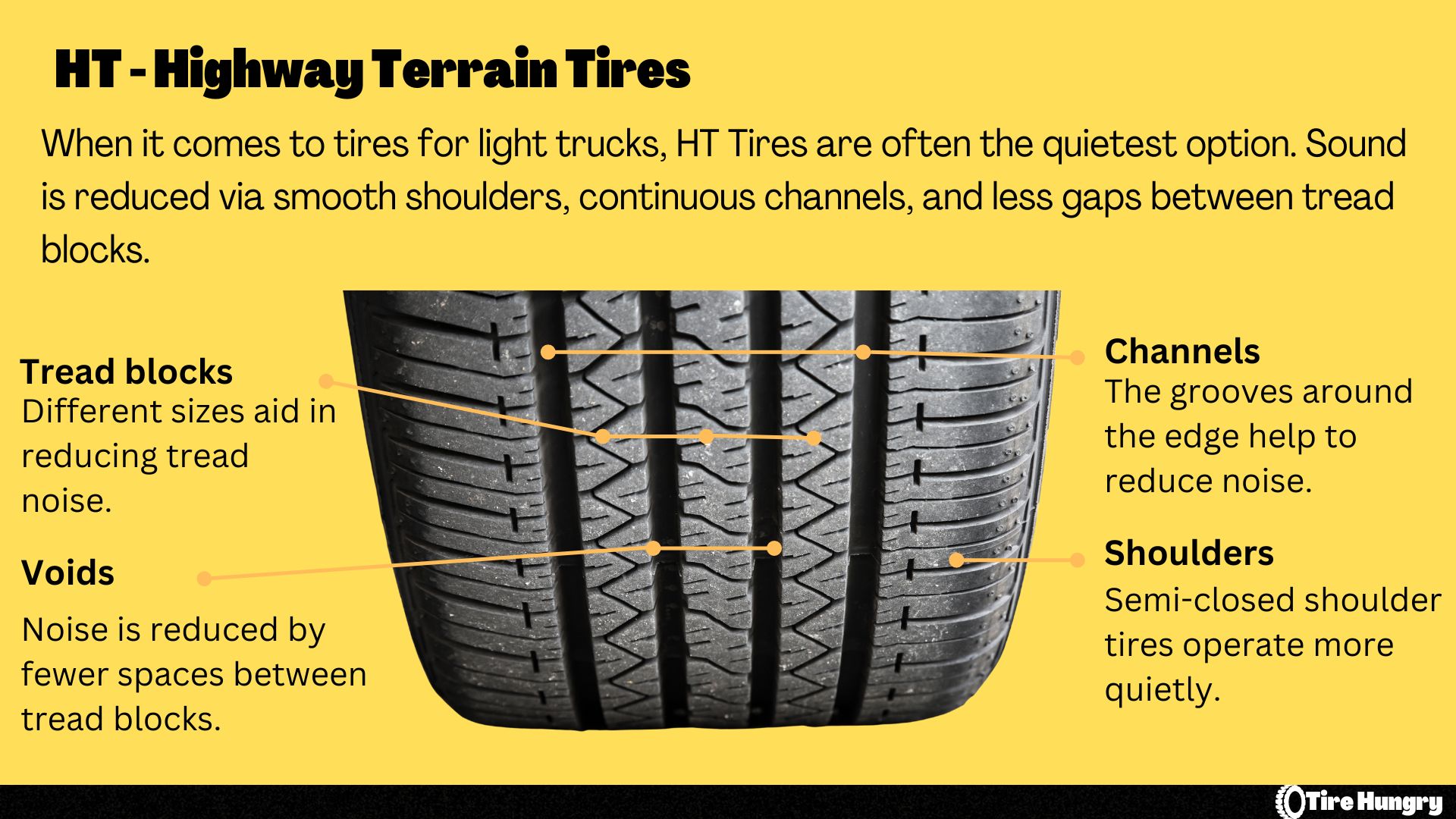
Despite the comparison, HT tires still have some differences when compared with normal touring tires. Considering the type of vehicles they are designed for, you may not get the highest speed rating. The load rating will be higher because SUVs and light trucks are heavier. Some of the heavier sedans on the market are exceptions.
HT tires are designed for road use, so you’re getting the best of that world. As a result, it combines all the features you’d need, like refinement and longevity. In terms of driving, they aren’t designed for performance driving, but you’ll still get good amounts of grip and traction.
What are AT Tires?
AT stands for All-Terrain, meaning that we’re diving into the off-road world a bit. These kinds of tires offer improved off-road performance without sacrificing road manners. Things aren’t as perfect as they appear.
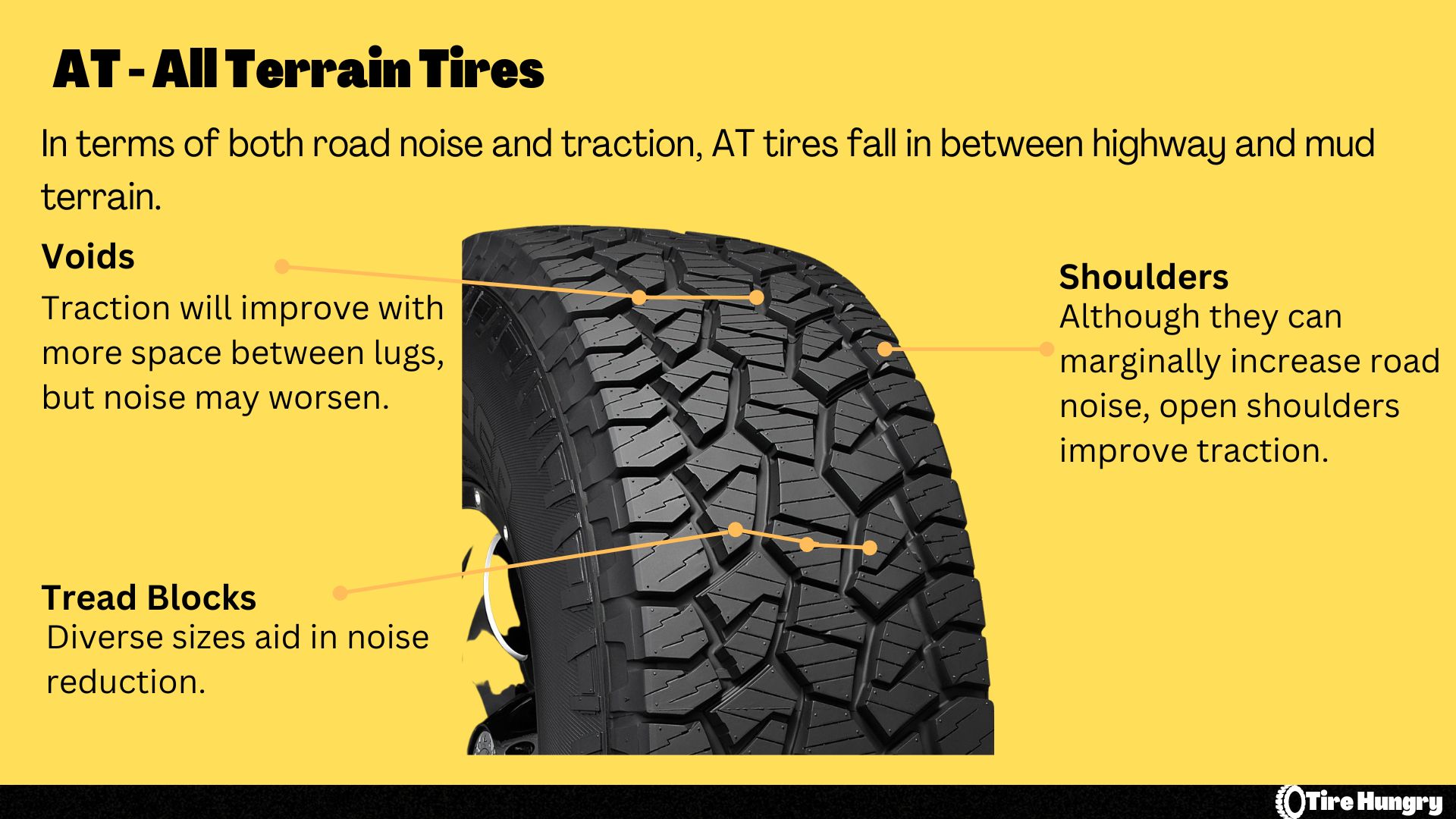
All tires that can deliver performance in multiple conditions have the same flaw. As flexible as they may seem, they will never be as good as the dedicated ones and the same goes for AT tires.
For some, the all-terrain part can be misleading. Yes, these tires can perform over multiple terrains, but there are limitations. As a model that can be used on the road and off it, the performance levels won’t be as good as dedicated tires for certain conditions.
On paved roads, AT tires are decently good performers. You are getting safe grip and traction levels with short braking distances. The refinement is acceptable but not as good as HT tires. It’s the same story on the off-road side.
AT tires have a more aggressive tread pattern which allows them to deliver performance in off-road situations. For the most part, they’re pretty good on dirt roads and shallow mud conditions. You can go rock crawling with some models, but you won’t have the best time.
The aggressive tread pattern may be good for light snow or mud, but on the road, it will cause a problem. While the ride is comfortable, unlike HT tires, with AT ones you will have a bit more road noise. Most people will be fine with that.
On a positive note, since AT tires are designed for off-road use, the durability is better. HT tires, for example, can be driven on a dirt road with limited performance, but they are more prone to punctures than AT tires.
Pros
- Usable on paved roads
- Able to deliver performance on and off-road
- Durable
Cons
- Won’t deliver the same off-road performance as mud-terrain tires
- Not the most comfortable or quiet option
What are MT Tires?
Moving on to the big league for the best possible off-road performance, you have Mud-Terrain tires or MT. Unlike the AT tires, these are designed with off-roading in mind, which is where you should use them. Yes, there’s some road performance, but it’s limited.
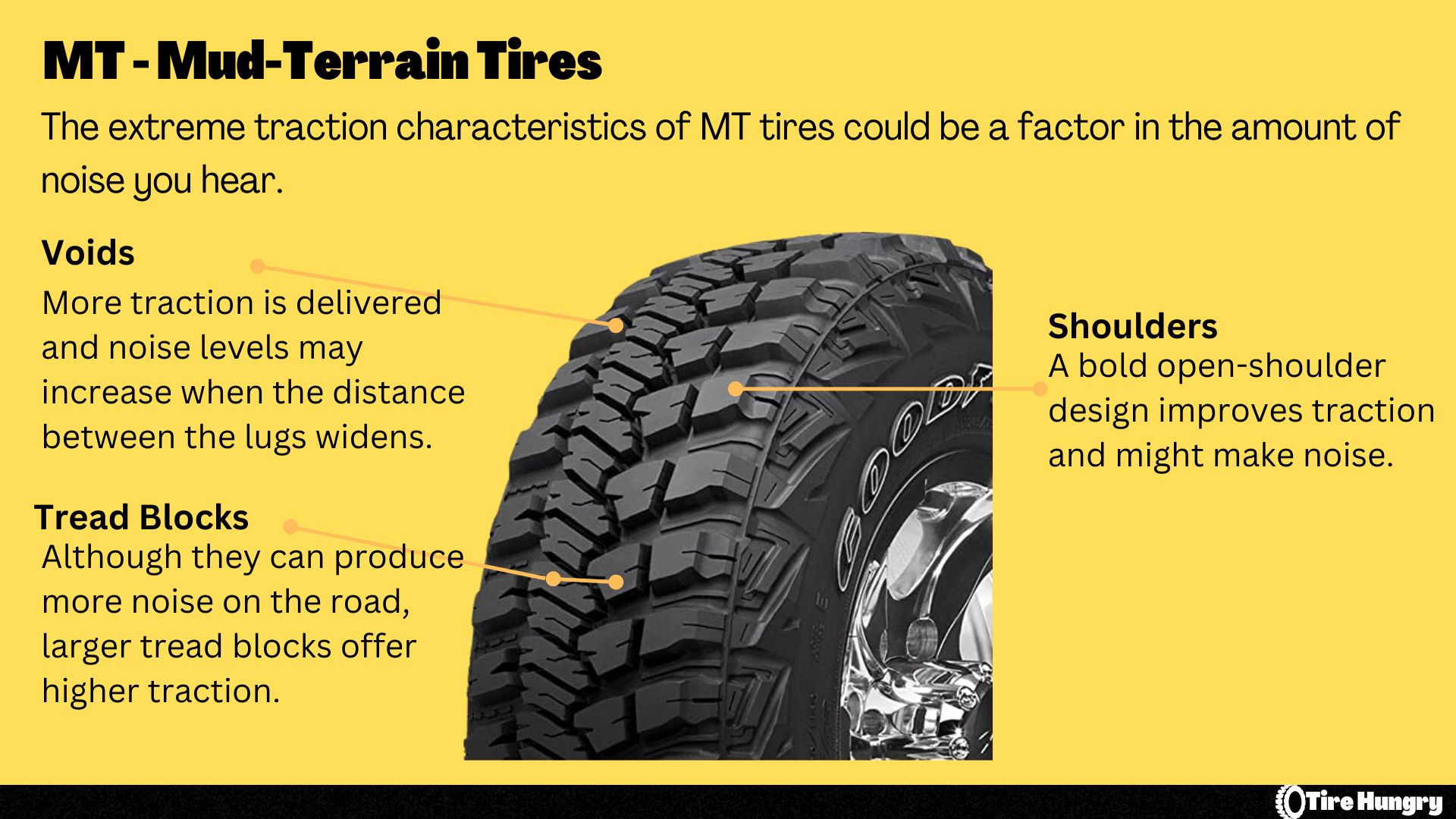
MT tires have the most aggressive tread pattern of the bunch, so you should expect the best possible off-road performance. Anything from hard-packed dirt roads to rock crawling is something that these tires can handle. Yes, they are called mud-terrain, but that doesn’t mean they’re specifically for mud.
The design and construction are other aspects that make MT tires better than the rest. Manufacturers considered that these will be used in off-road conditions, so the internal construction withstands torture. This is most noticeable with rock crawling, where you’ll need to deflate the tires. These will have no problem surviving that and combined with the puncture-resistant compound, it takes a lot to damage them.
Moving away from off-roading, we come to paved roads, which isn’t something any MT tire will excel at. We often categorize the performance of MT tires on paved roads as usable, and nothing more. You won’t get the same levels of performance as with AT tires and you should expect a less refined ride.
The comfort levels aren’t always the worst and if you lower the pressure by a few PSIs, you can get it to be soft-ish. Unfortunately, there isn’t a lot you can do about the noise. The aggressive tread pattern causes plenty of roar, which, depending on the vehicle, can be an issue for some.
Pros
- Superior in off-road scenarios
- Much more durable than all-terrain tires
- The internal construction can handle lowering the PSI
Cons
- Road performance isn’t very good
- Noise levels are higher
What About Hybrid Tires?
No, I’m not talking about tires that you can fit to a Prius. In recent years, manufacturers have experimented with some hybrid blends combining the performance of AT and MT tires. It’s a good approach, but it’s not a tire for everyone.
Hybrid tires fall somewhere between AT and MT tires in terms of performance. On the road, there isn’t a massive difference with AT tires and you’re getting a similar tire. They have a bit more aggressive pattern, so you could get a bit more road noise, but it’s not terribly louder.
With the more aggressive tread pattern, hybrid tires come close to MT ones in terms of off-road capabilities. They are better in mud and sand than AT tires. For the most extreme situations, a set of proper MT tires is still the best option.
Pros
- Decent performance on the road
- Better off-road performance than all-terrain tires
- Can take a beating in extremer situations
Cons
- Only a few models are available
- Noise and comfort levels aren’t great
What Kind of Tires Should You Get?
When we talk about the type of tires, it always comes down to what you need. With off-road capable vehicles, you have more options, so it’s important to make the right choice.
Even though most SUVs or trucks are capable of off-roading, some people never use that. For them, I’d recommend going for the HT tires. There’s no point getting a tire that can go off-roading if you don’t plan to use that. With HT tires, you’ll get a refined option with good performance in multiple conditions.
Moving up the scale, we have owners that need a little bit of both – on and off-road, which is where AT tires come into play. With these tires, you’re getting a lot more usable performance in off-roading situations. Don’t expect the absolute best, as these tires aren’t designed for that. For light to moderate conditions, they will do the job marvelously. On the road, you will sacrifice a bit of performance when compared with HT tires, but most people will be fine with that. It’s a good all-around option for owners that want the best of both worlds.
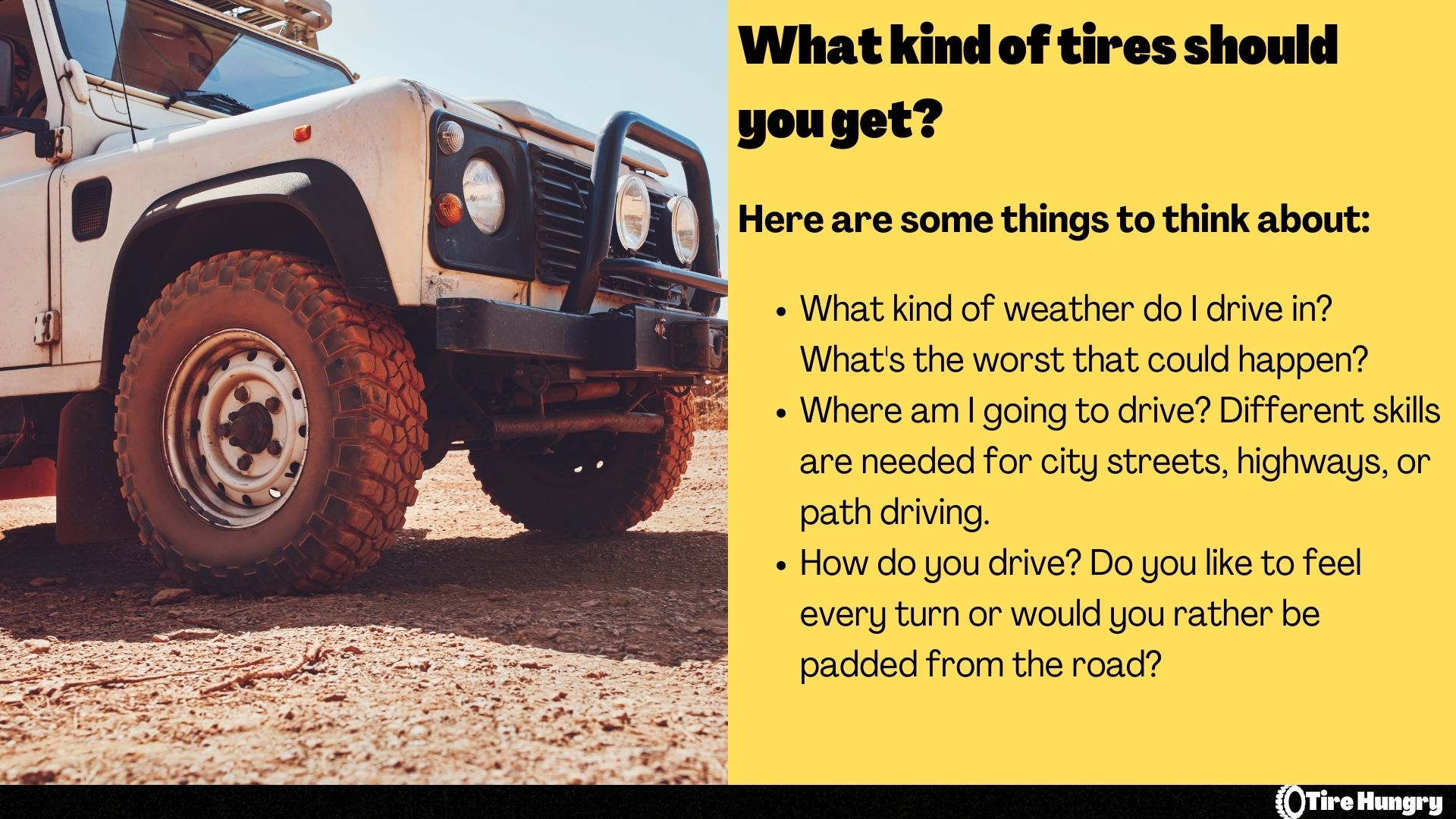
If the off-road performance of AT tires isn’t good enough, but still want to keep decent road performance, the hybrid tires are a solid option. They are like AT tires, but you’re getting better off-road performance.
People into serious off-roading shouldn’t look at anything other than MT tires. The road performance is good enough to be called safe, and that’s as much as you’ll get. As for refinement, the comfort levels aren’t terrible, but the noise levels are higher than AT tires. In off-road conditions, there isn’t a better option. The tread pattern, combined with the construction, enables these tires to deliver the best performance in any condition, regardless of how extreme it is.
Conclusion
It’s important to get the right type of tires for your vehicle. The same goes with off-road capable models and the tires that can be fitted to them.
Tire manufacturers try to cover as wide a range of use cases as possible, which is why there are multiple options. Having multiple options also means that you can make a mistake. For example, a set of HT tires are a poor choice for off-roading, unless it’s a short drive on a dirt road.
Going for the correct choice also means you will have a safe performance, from a set of tires designed to be used in those conditions. Making the wrong choice means you won’t get the most out of your vehicle in the conditions you need.
